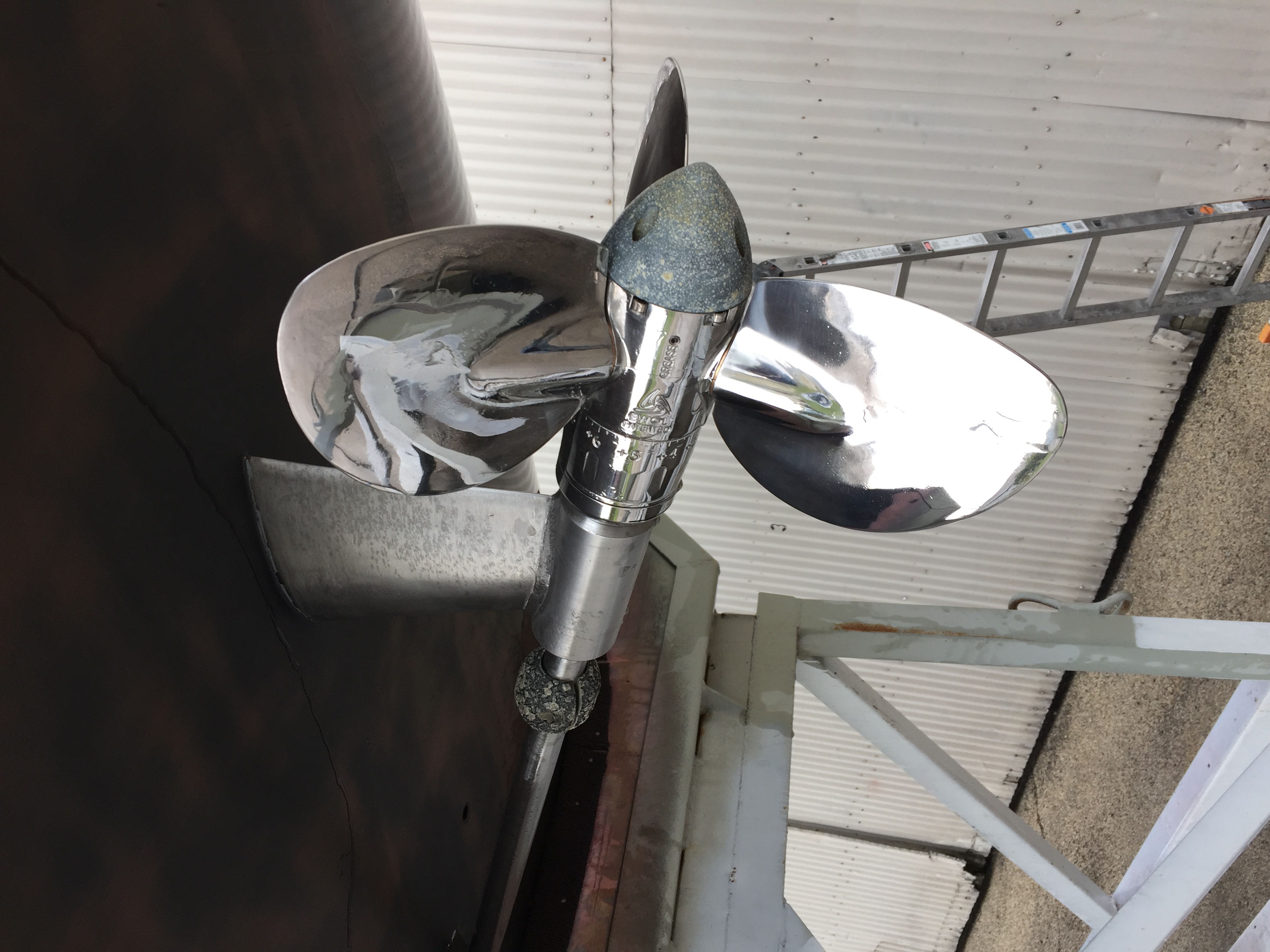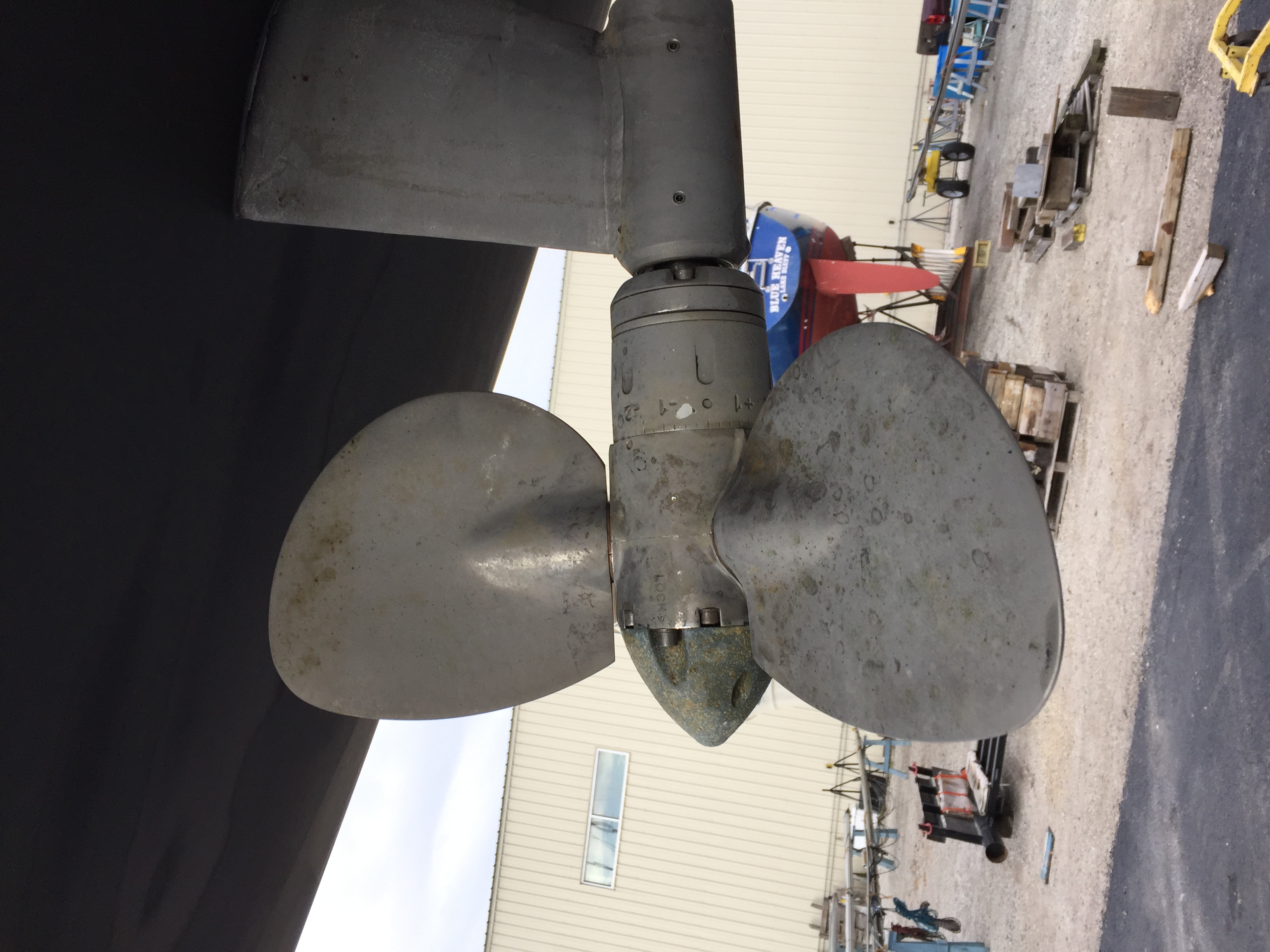Ho pensato di inviarti una breve e-mail per farti sapere che venerdì scorso ho tirato fuori dall’acqua la mia barca a vela, Exeter, e ho avuto la possibilità di ispezionare l’elica dopo un’estate di navigazione a Chicago. In allegato alcune foto. Quando la barca si trovava per la prima volta sul duro, il fondo era ricoperto da una sottile melma senza grandi crescite. Questo è normale per le barche nel lago Michigan. Dopo un lavaggio a pressione, l’elica sembrava come mostrato nella foto 1. Dopo un lavaggio acido e veloce, l’elica sembrava come mostrato nella foto 2. Sembra nuova di zecca! L’unica cosa interessante da segnalare è che il mio anodo di magnesio sull’albero dell’elica è stato consumato abbastanza gravemente. Potrei ancora avere un problema di corrente vagante sul dock. Ha fatto il suo lavoro e non sembra esserci alcun problema di corrosione con l’elica.
Quindi, nel complesso, sono molto soddisfatto della mia elica Orion. Ho cambiato il passo in modo che fosse giusto sui 20 gradi e vedrò come andrà a finire l’anno prossimo. L’unica cosa che consiglierei a EWOL sarebbe quella di offrire anche gli anodi realizzati in magnesio. Ciò proteggerebbe doppiamente l’elica per la navigazione in acqua dolce. (nota: ora abbiamo anodi in magnesio disponibili nel nostro shop online)
2020-10-18 JN – USA
Funziona bene e le prestazioni sembrano migliori della tre pale M … che ho sostituito. È più fluido durante la guida e sembra essere un po’ più veloce quando si guida solo al minimo. Non ho ancora impostato perfettamente il passo. Al momento del lancio, ho scelto un’impostazione della lama di 18 gradi che è un po’ bassa. Il motore (Yanmar 2GM20F), può facilmente girare fino a 3600 e la velocità della barca è di poco superiore ai 6 nodi. A breve, lo imposterò a 19 gradi e vedrò come funziona.
2020-08-21 JN – USA
Original Text
I thought I would drop you a quick email to let you know that I pulled my sailboat, Exeter, out of the water last Friday and had a chance to inspect the propeller after a summer’s worth of sailing in Chicago. Attached are several photos. When the boat first was on the hard, the bottom was covered in a thin slime with no major growth. This is usual for boats in Lake Michigan. After a pressure wash, the propeller looked as shown in photo 1. After a quick, mild acid wash, the propeller looked as shown in photo 2. Looks like brand new! The only interesting thing to report was that my magnesium anode on the propeller shaft was quite severely consumed. I still may be having a stray current issue on the dock. It did its job and there didn’t seem to be any corrosion issues with the propeller.
So, overall, I am very pleased with my Orion propeller. I changed the pitch to be right on 20 degrees and will see how this works out next year. The only thing I would recommend to EWOL would be to also offer the spinner anodes on the propeller to be made out of magnesium. This would double protect the propeller for sailing in fresh water. (note: we have now magnesium anodes available in our shop online)
2020-10-18 JN – USA
It is working fine and the performance seems better than the three bladed M… that I replaced. It is smoother when motoring and seems to be a little bit faster when just motoring at idle speed. I still don’t have the pitch set perfectly. At launch, I went with a 18 degree blade setting which is a little bit low. The engine (Yanmar 2GM20F), easily can rev up to 3600 and the boat speed is a little bit over 6 knots. Shortly, I will be setting it to 19 degrees and see how this works.
2020-08-21 JN – USA







